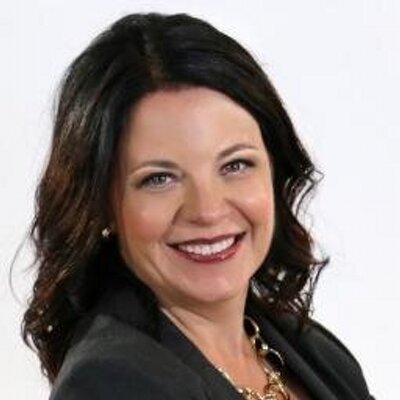Unlikely Allies Unite for a Policy Win
 It used to be that you could scour the country and be hard-pressed to find a foundation working in the public policy arena. Fortunately, that’s changing as more and more foundations realize that the root causes of the issues they want to address are themselves rooted within the workings of policy.
It used to be that you could scour the country and be hard-pressed to find a foundation working in the public policy arena. Fortunately, that’s changing as more and more foundations realize that the root causes of the issues they want to address are themselves rooted within the workings of policy.
But while it’s more common to find foundations working in policy, it’s still quite uncommon to find them working together on a policy issue. Policy is complicated, and figuring out one’s view and position around policy can be even more so. That’s one reason the Putnam team was so pleased to work with the Stuart Foundation in San Francisco on a recent case study about a loose collaboration of grantmakers (PDF) who worked together to help create education finance reform in California.
Education finance in California is horrifically complex, and the road to reform was long. (If you’d like the summary of that story, download the case study. (PDF)) What resonated most with our team during this experience was not the policy change itself, but the fact that six different foundations — with very diverse priorities and focuses for public education — all came together around this single issue and worked together to support a better approach to funding. For two years, the Stuart Foundation, Dirk and Charlene Kabcenell Foundation, Silver Giving Foundation, Charles and Helen Schwab Foundation, Broad Foundation, and Walton Family Foundation worked across lines that have been polarizing public education policy debates to focus together on one issue that made a great deal of sense to everyone.
Together, these six foundations were able to inform public discussion, build trust and transparency among the diverse parties engaged in that discussion, help create consensus, amplify voices of communities most likely to be affected by finance reform, and continually monitor and contribute to the public conversation as the new funding law moved toward passage.
How did they do it? There were several factors that made their collective work a success:
- They kept things informal and loosely structured. There were no formal agreements or requirements that members come to common agreements, and — most important — no pressure on participating foundations to make grants to any particular organization. Instead, the collaboration provided a structure of regular conference calls, email threads, and periodic in-person meetings. These not only provided opportunities for members to share thoughts and ideas but also kept everyone informed of the latest developments in the finance reform work and up to date on the work of each of the organizations supported by members. Notes of these and other key meetings were thorough and shared with everyone.
- They recognized and accepted a diversity of opinions. While they understood that each had a broader agenda for education, they united around the common goal of finance reform. As one member explained it, “perfect can’t be the enemy of good.” The nature of education finance reform also helped, appealing to advocates of equity, efficiency, and effectiveness in equal measure. The informality of the collaboration also aided in the amity of the group, since each member was free to pursue divergent aspects of education reform on their own at any time, with no obligation to other members.
- They kept the lines of communication open, and shared ideas and updates without trying to influence opinions. The collaborative was clear about its purpose — to work together to ensure that policy makers had the best possible information and nonpartisan analysis available as they developed the new school finance policy. The focus was on sharing information and did not attempt to direct any particular policy approach or engage in partisanship. Each organization funded by individual members of the collaborative maintained its own integrity of mission, and not all saw eye to eye on every point. Business, education, and nonprofit community organizations did not have to agree. Research organizations remained completely objective.
- Each member made its own grant decisions about which organizations and what specific activities to fund in this common effort. Potential grantees could approach one or multiple collaborative members, who in turn made their own individual decisions to fund or not without any guilt or pressure. Foundations could fund according to their own guidelines, grantmaking budget, and restrictions. Each played to its own strengths, yet did so in ways that bolstered the overall effort.
- Several of the foundations had flexibility when it came to funding decisions, which made quick responses possible as the process gained momentum. Three of the leading foundations in the collaborative were able to access designated funds within their grantmaking budget or could exercise CEO discretionary rights to make funding decisions in a much shorter time than a usual grant cycle. As the drive to passage became more intense in 2013 and immediate needs arose to help nonprofit partners with communications, coalition-building, and grassroots mobilization, these foundations were able to approve grants within a matter of days.
- The foundations maintained a high level of respect for all grantee organizations, and viewed them as equal partners. The customary power dynamic between funder and grantee was perhaps dissipated by the fact that many funders were engaged. In addition, the fast-paced nature of policy work in the legislative stage requires candor; grantees were open about what was going on and how and when the strategy needed to shift. This led to greater transparency and the trust necessary to move quickly when needed.
In many ways, these cooperating foundations set an example for other groups in California to follow. They showed how to work respectfully together for the common good, and built lasting relationships in the process that will no doubt benefit the policy landscape moving forward. Best of all, they helped usher in a new system of school finance that is more equitable, efficient and effective. That’s a powerful outcome for California’s kids.
Want to know more? Click to download the full case study or executive summary from the Putnam Consulting Group website.
This blog entry originally appeared on GMNsight. You can find the original post here.


